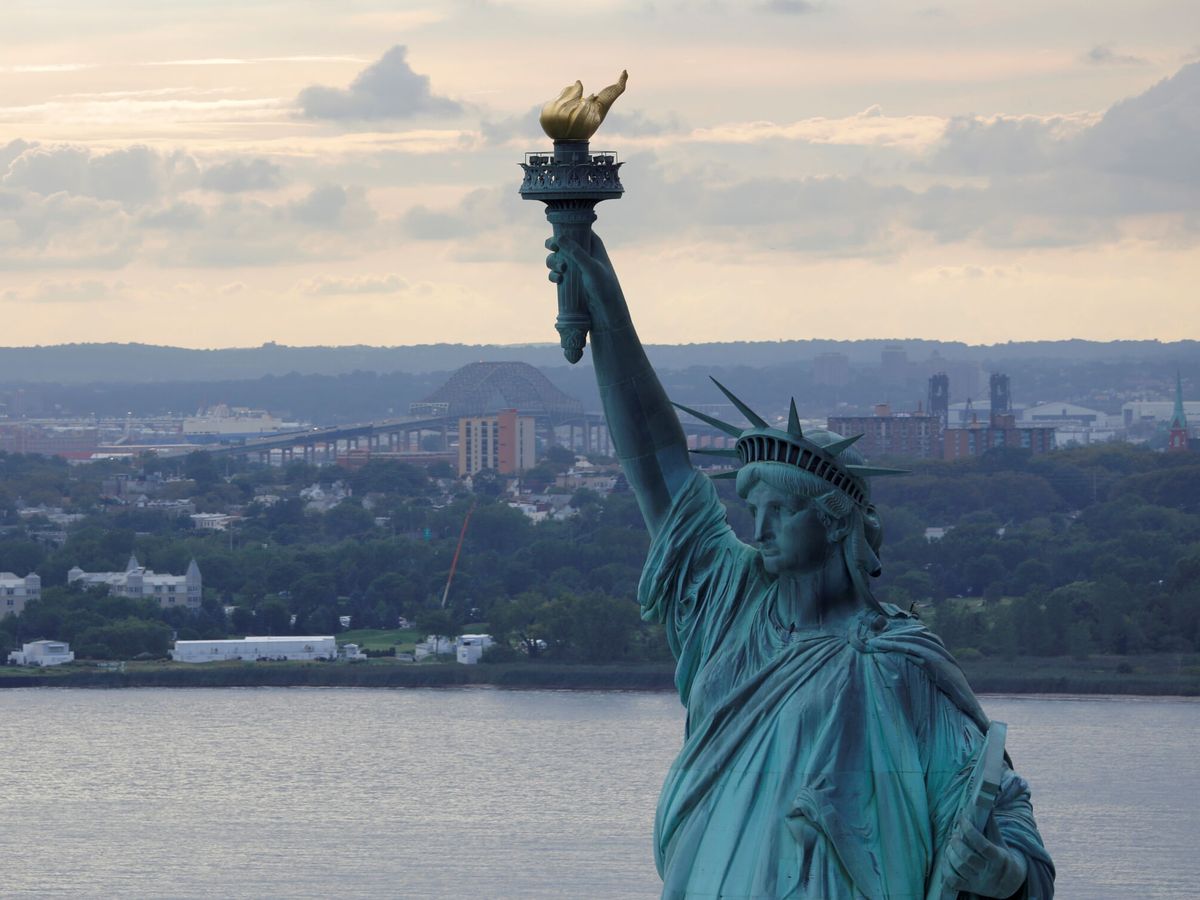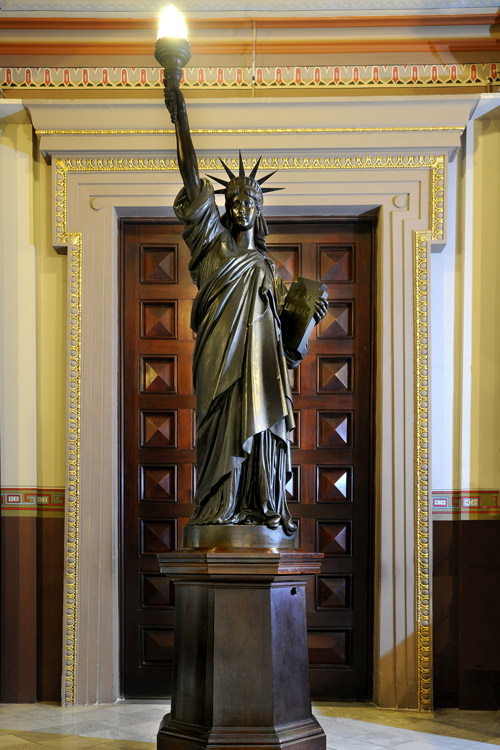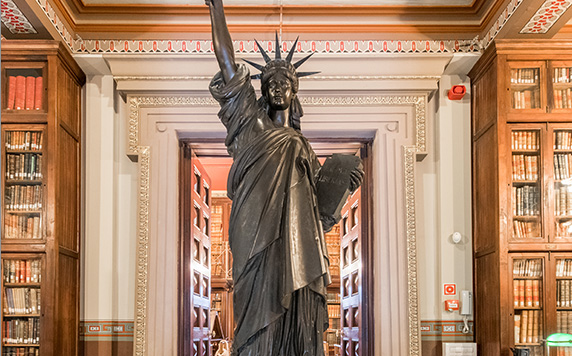
No monument can compete in celebrity with the Statue of Liberty in New York. Perhaps there are greater icons of freedom, justice and democracy, but there is no other work that has deserved so many replicas. There are more than 300 throughout the world and some are largely unknown despite their history behind them.
This is the case of the Statue of Liberty that is hidden in the Arús public library, on Paseo San Juan in Barcelona, where a magnificent replica has remained in the same place since 1895. A total of 127 years without moving a single centimetre and welcoming a magical library, the first to be opened in the Catalan capital.

So overwhelming was the impact of the Statue of Liberty in New York - a gift from France to the United States on the occasion of the centenary of its declaration of independence in 1774 - that replicas began to proliferate in countless countries.
They are in Soltau (Germany), Tokyo (Japan), Arraba (Israel), Visnes (Norway), Taipei (Taiwan), Bahria (Pakistan)... and, of course, Paris.
In the capital of France is, in fact, the 11-meter-high bronze model that Frederic Auguste Batholdi produced to scale to later give rise to the monumental 93-meter icon of the port of New York.

The Statue of Liberty (whose original name is Lady Liberty Lightning) was hugely inspiring around the world. It was inaugurated late in 1886 since it did not arrive in time for the centenary of the US declaration of independence in 1884. And the aftershocks did not stop.
In Barcelona, the sculptor Manuel Fuxà was commissioned to make a scale copy for the inauguration of the Arús library, a reference point for Freemasons in Catalonia. In reality, Fuxà was in charge of making the plate and it was the Italian master bronze artist Odoardo Luis Razzauti who completed the two-meter-high work.
The small-scale copy of the famous original can be seen in this Barcelona library up some elegant marble stairs. Discounting the size, the most conspicuous difference is the inscription in the book that Lady Liberty holds her left arm; instead of the date that the United States proclaimed its independence (JULY IV MDCCLXXVI), in the copy of Fuixà, you can read “Anima Libertas” (the Freedom of the Soul).